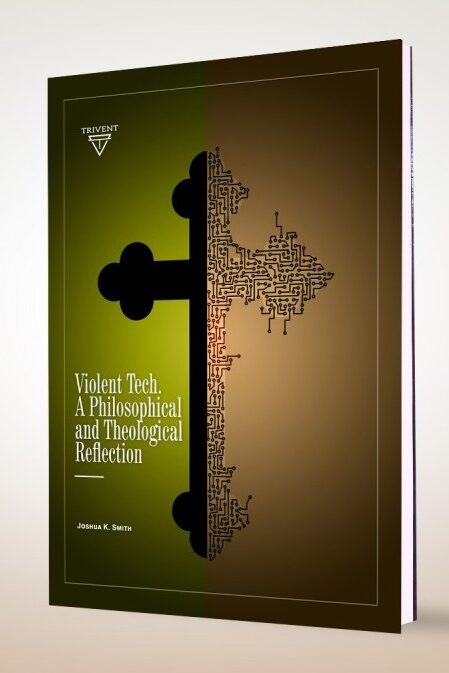The release of Christopher Nolan’s film Oppenheimer ignited extensive discussions online about war narratives, advanced technology, and the influence of emotions in storytelling through new media. While the term “affective textures” might not be familiar to everyone, it’s the reason why people spent over $500 million to watch a movie depicting the creation of the atomic bomb and its profound impact on the world in 1945. Affective textures encompass the emotional aspects of touch, sight, and sound that draw us into these stories. In my recent research on violence and technology, I’ve delved into the significance of these textures for both healing and harm. The ethical dimension of this issue goes beyond a simple right or wrong, involving the context and intended outcomes these textures aim to achieve.

What does it take to create a compelling movie about something as dreadful as the atomic bomb? To answer this, let’s explore the insights of Vilém Flusser, a philosopher who focused on design and imagery.[1] Flusser, unlike Marshall McLuhan, viewed humans not merely as tools of technology but as active participants in a continuous feedback loop. The technical image isn’t just a way to see things; it reconstructs the act of seeing itself. This concept has a major impact on how we perceive TV and theater screens. They aren’t just representations of past events; they recreate reality and deliver information. While this has its benefits, it can also lead to a lack of critical thinking due to an overabundance of information. This “image overload” can create a void of historical and contextual understanding. Applying this to “Oppenheimer,” Flusser’s critique resonates. However, there’s also a positive side to his thoughts on new media’s potential to spark imagination.
The challenge with movies like Oppenheimer is that they often leave viewers emotionally detached. Despite their impressive visuals and talented actors, they struggle to provide the emotional depth needed to internalize the horrors of violent technologies like the atomic bomb. Additionally, these films often neglect to present the perspective of the Japanese victims, and the financial benefits rarely reach the families affected. This lack of emotional connection not only fails to provide an ethical framework but also alienates those who have not been involved in the war. Christopher Nolan’s narrative and his philosophical take on nuclear weapons fails to challenge the Western perspective on violent technology, possibly even reinforcing it. Clearly, this falls short of being a good approach. Nonetheless, movies like Oppenheimer can serve as valuable case studies for crafting effective emotional experiences.
Crafting a More Effective Experience
In my recent research on violent technologies,[2] I delve into how the U.S. military uses emotional experiences to prepare soldiers for the realities of war. By utilizing methods like role-playing, video games, and simulations, soldiers can gain insights into combat scenarios. As someone with firsthand experience, I can attest that these techniques create emotional textures that help individuals understand the essence of war. These personal experiences highlight the significance of emotional textures in media. The more senses engaged, the better equipped individuals are to understand, learn from, and recover after experiencing violent technologies. However, these experiences are approximations, not true reflections of reality. For instance, the true danger, impact on families, and emotional aftermath are often not accurately conveyed.
This principle applies to various mediums, such as video games and museums. A prime example is the Jüdisches Museum Berlin (jmberlin.de), which uses architectural elements to immerse visitors in the experience of Holocaust victims. By evoking discomfort and disorientation, the museum provides an emotional connection that fosters ethical reflection. To translate this to films like Oppenheimer, the focus should be on crafting a narrative that challenges the ethics of the technology at hand. Unfortunately, Oppenheimer missed this mark, leaving viewers in awe rather than contemplating the ethical implications. A review by Rotten Tomatoes hailed it as “breathtaking, ballsy, and one of the best biopics ever made.”[3]
Other reviews commented the following:
Oppenheimer isn’t just an epic masterpiece but one of the most important films of the year. – Danielle Solzman, Solzy at the Movies
The most breathtaking film of the year. – Jordan Hoffman, The Messenger
Unless Hollywood has a sleeper hit waiting in the wings, Oppenheimer is primed to be 2023’s best film. – Maggie Lovitt, Millennial Falcon Reviews
If Nolan’s goal was deep philosophical reflections on atomic weapons and US policy, it seems be absent from the reviews. For a film about apocalyptic devices like the atomic bomb, I would expect audiences to leave in dismay, shock, and disgust at the evil and violence the US outpoured upon other image bearers. Without textures like the smell of burning earth, the heat of the desert, or the constant fear of reprisal that essentially was the Manhattan project, passive media like film cannot convey the true nature of these technologies.
Violent tech like atomic bombs is not created in a moral vacuum; however, they do create abstraction in the legal, ethical, and practical matters of use of force and rules of engagement. There is, what Elke Schwarz labels, a biopolitical conditioning that goes before the creation of these technologies and lingers in their wake (cf. Hannah Arendt, On Violence).[4] New forms of technology create this framing, and this is only further abstracted when violence is the telos of the implement. What do I mean by this biopolitical framing? We see in the rhetoric of our politics, the war on terrorism and the constant appeal to concession by our congress members and tech companies that these technologies of war will bring health, wealth, and protection to the US.[5]
Oppenheimer serves as a case study, showcasing both the potential and the pitfalls of communicating complex historical events and their moral implications. While its breathtaking visuals and strong performances create an immersive environment, the film’s ability to truly engage audiences on an emotional and ethical level falls short. The juxtaposition of its awe-inspiring depiction of the Manhattan Project against the omission of the Japanese victims’ perspective highlights the film’s missed opportunity to foster genuine empathy and ethical contemplation about the lasting impact of violent technologies.
Creating emotionally resonant experiences that bridge the gap between media and lived reality requires a nuanced approach. It involves embracing discomfort and disorientation, akin to the design philosophy of institutions like the Jüdisches Museum Berlin, which immerse visitors in the Holocaust experience through carefully constructed spaces.
From 1945 forward the US military and its civilian scientists have created a symbiotic relationship between military research for new weapons, surveillance, and human augmentation and the public consumer market. Mad scientists at DARPA (since Vietnam) have successfully sold the public a lie that advanced weaponry like lethal drones, autonomous weapon systems, surveillance systems, and nuclear weapons equals peace, protection, and prosperity for the American public. This has formed a psychological and theological attachment between violent tech and society. The promise is that through billions of dollars of publicly funded research, organizations like DARPA and the NSA will give the consumer technological goods alongside of medical advancements. But what is the cost of this? The cost is the human soul, body, mind, and devotion. Simply because the public does not see the ongoing financial, psychological, and ethical cost of this relationship does not make it absent. In 1945 the Japanese public paid the price for research of violent technologies. This was only the beginning for death machines that create a moral vacuum and rarely, if ever, resolve them.
Ultimately, the journey to crafting meaningful narratives about violent technologies and their impact is one that demands a delicate fusion of artistic expression and ethical responsibility. We must aspire to create works that not only captivate but also provoke contemplation, empathy, and lasting change in our collective understanding of the past and its lessons for the future.
[1] Vilém Flusser, The Shape of Things: A Philosophy of Design (London: Reaktin Books, 1999), 17-34.
[2] Joshua K. Smith, Violent Tech: A Philosophical and Theological Reflection, Trivent Transhumanism vol. 3 (Hungary: Trivent Publishing, 2023).
[3] Christopher Campbell, “Oppenheimer First Reviews: Breathtaking, Ballsy, and One of the Best Biopics Ever Made,” Rotten Tomatoes Website, July 19, 2023, Oppenheimer First Reviews: Breathtaking, Ballsy, and One of the Best Biopics Ever Made | Rotten Tomatoes (accessed August 15, 2023).
[4] Elke Schwarz, Death Machines: The Ethics of Violent Technologies (Manchester: Manchester University Press, 2018). Cf. Hanna Arendt, On Violence (Orlando: Harcourt, Brace, and Company, 1970).
[5] See Jennifer Terry, Attachments to War: Biomedical Logics and Violence in Twenty-First-Century America (Durham, NC: Duke University Press, 2017).

Joshua K. Smith, a pastor, and theologian, delves into the intricate interplay between technology, theology, and faith. With a keen interest in exploring the convergence of these realms, he is co-chair in the technology hub of the Kirby Laing Centre for Public Theology. His background encompasses robotics, infosec, and information technology which is complemented by his prior service as a member of the U.S. Military. To connect, www.joshuaksmith.org, @JoshuaK_Smith (Twitter) @joshuak._smith (Insta)